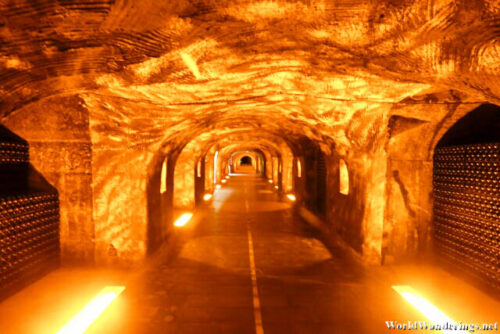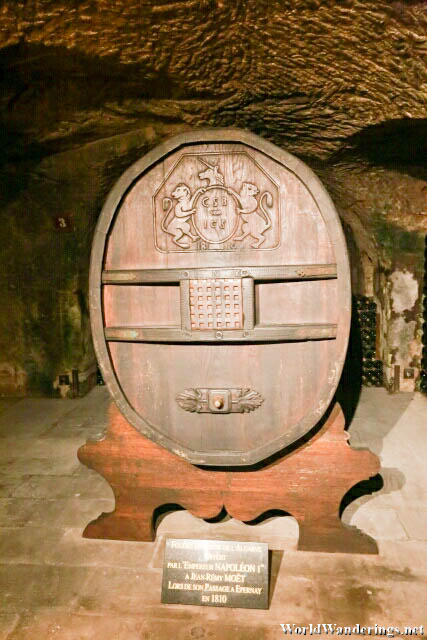I found myself as part of a group touring the Moët and Chandon Cellars. Our tour guide speaks very good English and explains everything along the way. He started with the history of the company and how it became one of the largest champagne producers in the world. I learned that just because you can produce sparkling wine, doesn’t mean that you can just call it champagne. Apparently, champagne can only be called champagne if it is produced in this specific region. It needs to be using the grapes and produced in this area for it to be called champagne. So what was the result of that, if you can only grow and produce them here, you need very large space to be able to process that much wine. The result is the cellars that we see now.
We know that grape juice needs to be fermented to turn into wine. To achieve scale and consistency at the same time, Moët and Chandon dug underground cellars as it is common. The underground temperature is more constant compared to the one above ground. This makes it better for making wine. Additionally, you need the grape juice to ferment in the dark. To achieve the production scale that Moët and Chandon has, they have dug out 28 kilometers of underground cellars to produce champagne. Indeed, you can say that Avenue de Champagne literally has champagne running underneath the street.
[xmlgm {http://www.worldwanderings.net/kml/MoëtandChandon.kmz} zoom=19]

